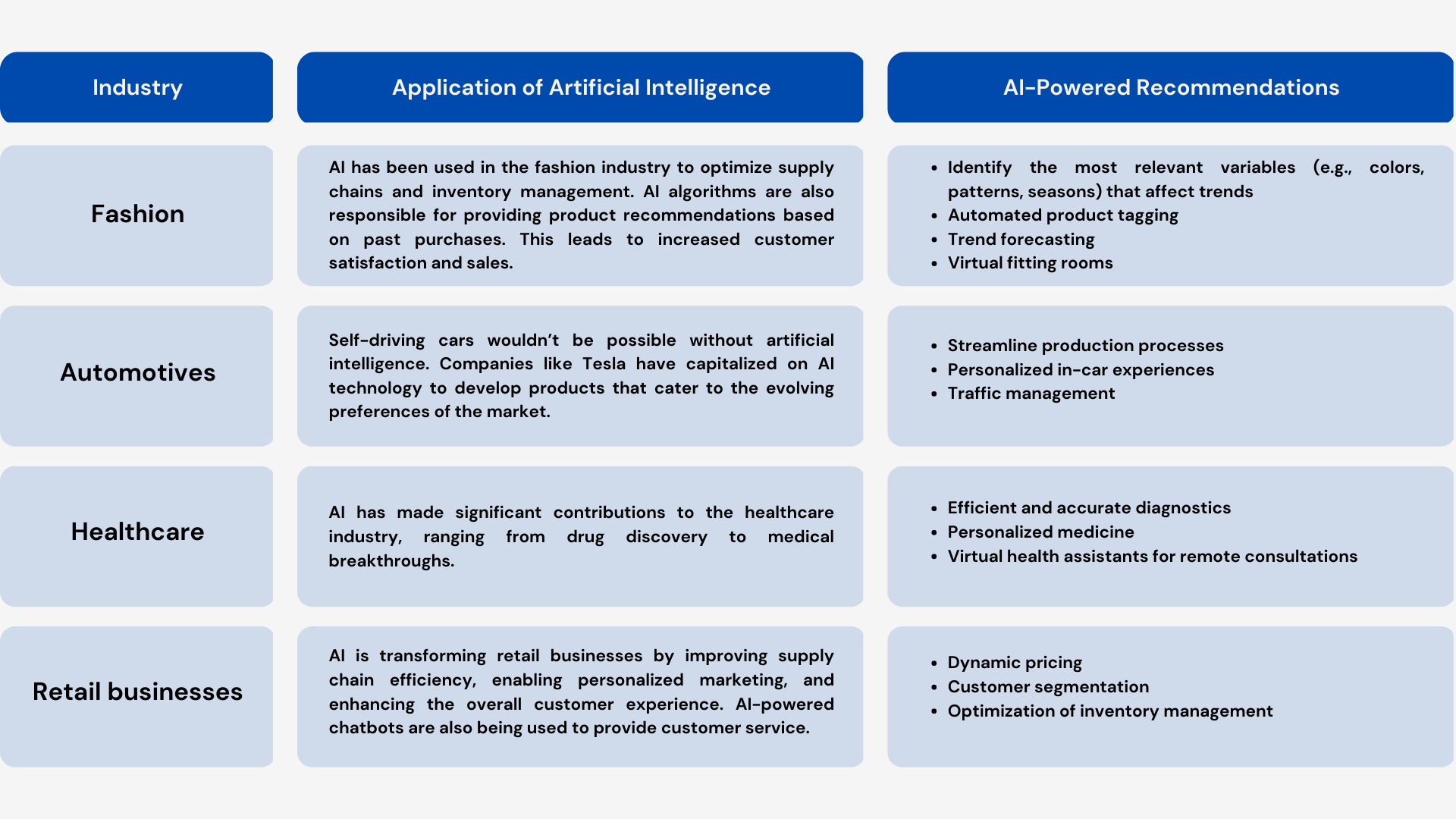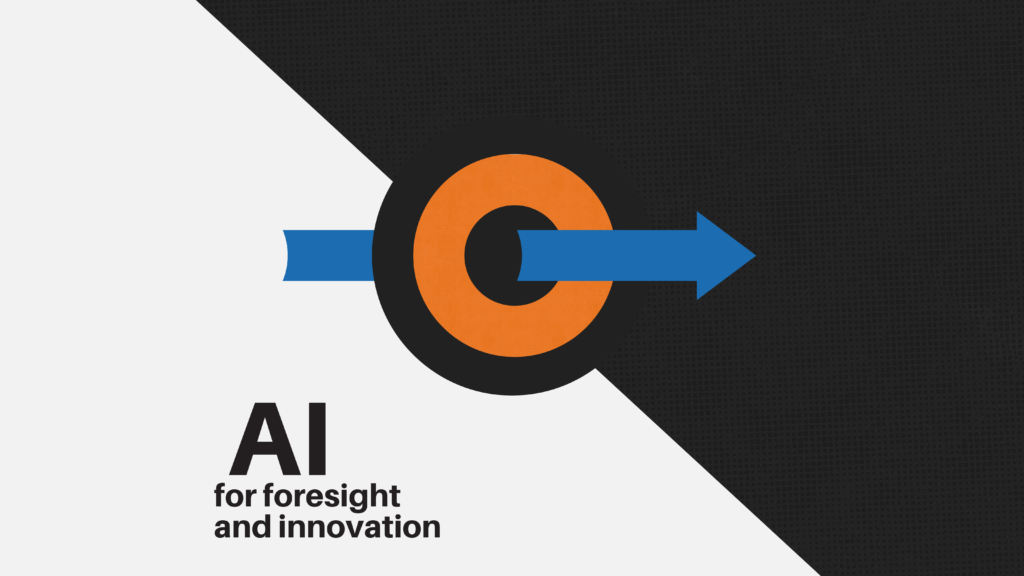Picture this: You’re the captain of a ship, navigating through uncharted waters under a sky full of stars.
Now put back the hat of a business leader and look at how these stars serve as your array of data points. But the thing is, you don’t know how to read stars. You don’t know how to navigate the world using constellations. You only know how to run your business – and that the Big Dipper points to the North Star.
In this scenario, artificial intelligence (AI) serves as your guiding compass, an invaluable tool that can chart the road to future innovation opportunities that helps your business thrive in an uncertain world. This article delves into the fascinating intersection of AI and strategic foresight. By the end, you should be able to sail confidently through the competitive, unforgiving seas of the global market, with AI tools by your side.
The Importance of Bringing AI-Powered Foresight Strategies to Corporate Innovation
Imagine a robot that could identify nascent trends, uncover potential disruptions, and provide actionable insights to guide your organization through the unknown future. This is no longer the stuff of science fiction.
AI’s unparalleled ability to analyze vast amounts of data and recognize complex patterns enables business leaders to stay ahead of the competition. It helps them make informed decisions that are based on data rather than guesswork. That said, here are just some of the ways AI has been revolutionizing strategic foresight and corporate innovation:
- Idea generation: AI can be programmed to generate new ideas and solutions. If you’re running out of creative juices to ideate innovative business models, ChatGPT can be your starting point.
- Explore the future: Predictive analytics means forecasting future events or trends, such as demand fluctuations, market shifts, and potential disruptions. These forecasts help companies proactively adapt their strategies, allocate resources more effectively, and seize new opportunities.
- Scenario planning: AI-powered simulations can model various scenarios based on different sets of assumptions, input parameters, and strategic choices.
- Business intelligence gathering: Save time and resources when you use AI to automate your data-gathering processes.
- Virtual assistants: Artificial intelligence aside, if you don’t have a personal assistant yet, you’re missing out. Time is of the essence in business. By streamlining administrative work, managing schedules, and providing instant access to critical information, assistants allow you to concentrate on what truly matters.
How Business Leaders Can Incorporate Artificial Intelligence in Strategic Foresight
Think of business leaders, like yourself, as players in a complex game, where the goal is to make your respective companies profitable and sustainable. You would, of course, need to make smart decisions about the future.
Lucky for you, you have the “artificial intelligence” card in your hands – akin to “Gitaxian Probe” in Magic: The Gathering and “Pot of Duality” in Yu-Gi-Oh! – that tells you exactly what happens next. Here’s how:
Step 1: Data Collection and Preprocessing
With AI technology, you can easily gather historical data (e.g., industry reports, competitive analysis, market trends, and customer preferences) from various sources. Keep in mind that raw data can often be unstructured, incomplete, and noisy. Preprocessing entails removing inconsistencies, duplicates, and irrelevant information in order to have more accurate and insightful AI-powered guesses of how the future might unfold.
Step 2: Feature Selection and Engineering
Once the data is meticulously preprocessed, the next step involves identifying the most relevant features or variables that will influence how the future might look like. This is essential for reducing complexity and enhancing model performance.
Consider a hypothetical e-commerce business owner, Mark, who aims to predict customer churn to improve customer retention. His dataset consists of various customer attributes and their purchasing behaviors (e.g., age, frequency of purchases, time since last purchase). Mark and his team look at the correlation between each feature and customer churn rate, as well as the interdependence of the variables.
Once they’ve established which variables are the most significant predictors of customer churn, they now create a new dependent variable called “customer engagement.” This newly engineered feature would then provide a comprehensive understanding of how engaged their customers are on their e-commerce platform and ultimately improve the accuracy of their AI model’s predictions.
Step 3: Model Training and Validation
This step involves feeding the model with historical data for it to learn and identify patterns that can be used to make future scenarios. You can choose from a wide range of machine learning algorithms, each with its strengths and limitations, to build the optimal model. Take note that this process requires a lot of iteration and refinement.
Although it’s true that the knowledge of artificial intelligence is limited – like how ChatGPT’s knowledge base is limited to data available up until 2021 – it can still be an invaluable tool for corporate innovation.
By identifying past patterns, analyzing competitor strategies, and leveraging strategic foresight methodologies, AI tools offer a strong foundation upon which you can build your venture initiatives. We recommend supplementing AI-generated insights with your own research to ensure that the latest developments are taken into account.
Step 4: Interpret AI-Generated Insights
Data interpretation and analysis are crucial components of strategic foresight. It enables business leaders to derive actionable knowledge from the outputs of AI models which, in turn, serves as a basis for strategic initiatives that aim to drive corporate innovation.
For one, you could examine the potential risks and opportunities associated with various future scenarios. Two, you can evaluate the model’s assumptions and potential biases. And three, we recommend that you promote the collaboration of human expertise and AI capabilities; no matter how advanced AI technology gets, nothing can compare to human intuition for understanding nuances and practical implications.
Step 5: Continuous Improvement
The landscape of innovation is ever-evolving, and as such, the AI-driven process must also be one of continuous improvement. As new data becomes available, don’t forget to update your AI models to maintain their accuracy and relevance. This also helps your business capitalize on emerging opportunities.
Fintech Industry: Real-Life Application of Artificial Intelligence for Strategic Foresight
Let’s now delve into real-world applications of AI for strategic foresight, specifically how it can transform the way fintech organizations navigate the future (GCash is a case in point). This is a simplified version of the process laid out earlier:
Data collection and preprocessing: Gather historical data on financial markets, as well as real-time data from news outlets, financial forums, and other relevant channels. Afterward, clean the data.
Feature selection and engineering: Some of the most influential variables in the fintech industry include GDP growth, inflation rates, stock prices, trading volumes, spending habits, technology adoption rate, and regulatory changes.
Model training and validation: Various machine learning and deep learning algorithms (e.g., regression models, decision trees, neural networks) can be employed to identify potential future trends, opportunities, and challenges in the finance sector.
Interpret AI-generated insights: Fintech companies can collaborate with domain experts to make data-informed decisions for their next strategic initiatives – whether these are new financial products, services, or partnerships.
Continuous improvement: Monitor the performance of the implemented corporate innovation initiatives, and measure their impact on the fintech industry. Gather learnings, feedback, and data.
AI-Based Corporate Innovation Examples
The dawn of artificial intelligence has ushered in a new era of corporate innovation, with companies across industries embracing this transformative technology. From streamlining operations to predicting what the buyer wants next, these real-world examples show you the sheer power of AI technologies:

Embiggen: We Connect the Gap Between the Future and Today
Take a shot every time we mentioned “AI” in this article.
In the same way, as a business leader, you need to take a shot at your business if you want to succeed (was that segue too forced?). You don’t want to wake up one day and realize that your brand is going nowhere. By investing in AI-driven solutions, you’ll be able to anticipate challenges and be leagues ahead of the competition. And don’t worry – here at Embiggen, we’ll help you take calculated risks in such a precarious landscape.
As venture builders, we are uniquely positioned to help corporations and startups seize the opportunities presented by the digital era. Our approach combines strategic foresight, corporate innovation frameworks, and a proven track record of successful venture creation to unlock the full potential of your business. Build the future with us today.

